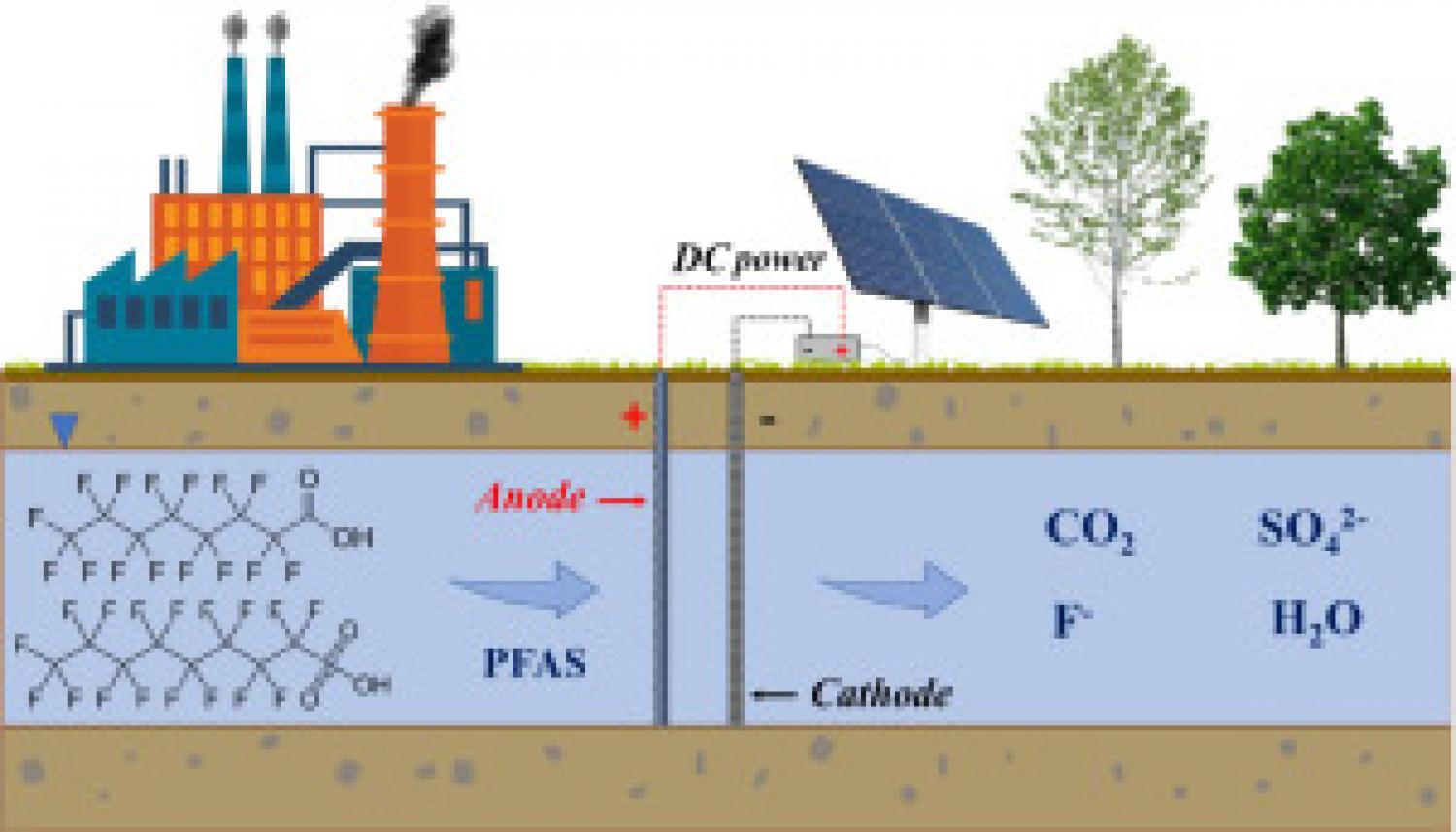
Elsevier, Chemical Engineering Journal Advances, Volume 9, 15 March 2022
Groundwater remediation technologies that can destroy per- and polyfluoroalkyl substances (PFAS) in situ are in high demand. To address this need, using flow-through electrochemical reactors we compared the performance of three mesh electrode materials that may be implemented in the subsurface as permeable reactive barriers. A Magnéli-phase titanium suboxides TinO2n-1 anode achieved higher perfluorooctane sulfonate (PFOS) oxidation rates and lower energy consumption than boron-doped ultrananocrystalline diamond and IrO2-Ta2O5 mixed metal oxides, and was thus selected for more detailed testing regarding the impacts of varying current density, flow velocity, electrolyte conductivity, and PFOS concentration. Over 99% of PFOS removal was achieved under continuous flow conditions. The fluorine mass balance showed that most PFOS-bonded F was released as fluoride, while no organic intermediates were detected in the aqueous phase. Each ∼2% of fluorine was recovered as HF and organofluorine intermediates in the gas phase. A comparison of 10 PFAS revealed a hydrophobicity-driven increase in oxidation rate with increasing perfluoroalkyl chain length as well as faster oxidation kinetics for perfluoroalkyl carboxylic acids compared to perfluoroalkane sulfonic acids, likely due to contributions from electrochemically activated sulfate. The energy consumption of PFAS treatment under simulated slow-flow groundwater conditions was substantially higher than in ex situ electrochemical systems optimized for enhanced mass transfer. Consequently, future work should focus on in situ treatment design optimization with an emphasis on power requirements. Collectively, our investigations demonstrate that among the few water treatment technologies capable of breaking the carbon-fluorine bond, electrochemical treatment is a promising approach for in situ destruction of PFAS in the subsurface.
